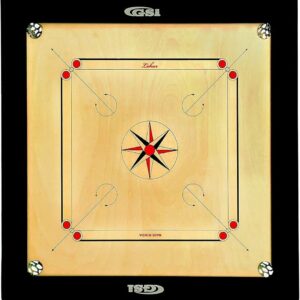The Mathematics Behind Sugar Bang Bang’s Winning Combinations
Sugar Bang Bang is a popular online slot game developed by Nolimit City, known for its vibrant graphics and lucrative payouts. Players are drawn to this game due to its high volatility and enticing winning combinations. But what lies behind the math that makes Sugar Bang Bang so attractive? In this article, we will delve into the mathematical concepts that govern the https://sugarbangbang.com game’s mechanics.
Understanding the Basics
Before diving into the mathematics behind Sugar Bang Bang, it’s essential to understand the basics of the game. The slot features five reels and 40 paylines, with a wide range of symbols including low-paying fruits, medium-paying animals, and high-paying sugar-themed icons. The game also includes a bonus feature called "Sugar Bomb," which can be triggered by landing specific combinations of symbols.
The core mathematics behind any slot game revolves around probability, as the outcome of each spin is determined by chance. In Sugar Bang Bang, the probability of winning is tied to the distribution of symbols on the reels. The more frequent a symbol appears, the higher its probability of appearing in a given spin.
Mathematical Concepts
The mathematical foundation of Sugar Bang Bang relies heavily on three key concepts: probability theory, combinatorics, and expected value. We will explore each concept in detail to understand how they contribute to the game’s winning combinations.
Probability Theory
Probability theory is the branch of mathematics that deals with measuring the likelihood of events occurring. In the context of Sugar Bang Bang, probability theory governs the distribution of symbols on the reels. The game features a total of 12 unique symbols, including the Wild and Scatter. Each symbol has its own probability of appearing in a given spin.
For example, let’s say we want to calculate the probability of landing three consecutive Sugar Bomb symbols. We know that each symbol has an individual probability of appearing on a reel, which is determined by the game’s algorithm. To find the combined probability of landing three Sugar Bombs in a row, we would need to multiply their individual probabilities together.
However, calculating the exact probability of winning combinations is not straightforward due to the complex interplay between symbols and reels. The game’s mathematics involves numerous factors, including hit frequencies, volatility, and payout ratios, which all contribute to the overall probability landscape.
Combinatorics
Combinatorics is a branch of mathematics that deals with counting and arranging objects in various ways. In Sugar Bang Bang, combinatorics plays a crucial role in determining the number of possible winning combinations. The game features 40 paylines, each of which can trigger a win when specific symbols land on adjacent reels.
To calculate the total number of possible winning combinations, we would need to consider the arrangement of symbols across all 40 paylines. This involves calculating the number of permutations and combinations of symbols, taking into account the different ways they can appear on the reels.
Expected Value
Expected value is a fundamental concept in probability theory that measures the average outcome of repeated events. In the context of Sugar Bang Bang, expected value determines the long-term profitability of each symbol or combination. The game’s mathematics involves calculating the expected value of various outcomes, including wins and losses.
For example, let’s say we want to calculate the expected value of landing a Sugar Bomb combination on one of the paylines. We would need to multiply the probability of winning by the associated payout, then add up the results for all possible combinations. This will give us an estimate of the game’s long-term behavior and help players make informed decisions.
Mathematical Analysis
To gain insight into the mathematics behind Sugar Bang Bang, we can apply various mathematical techniques to analyze the game’s mechanics. One approach is to use Markov chain theory to model the transition between states in the game, such as from a losing streak to a winning combination.
Another technique involves using stochastic processes to simulate thousands of spins and estimate key metrics like hit frequencies and volatility. This will provide us with a more accurate picture of the game’s behavior over time.
By applying these mathematical techniques, we can uncover the underlying patterns that govern Sugar Bang Bang’s winning combinations. For instance, we may discover that certain symbols or combinations are more likely to appear together than others, which could be used to inform strategic betting decisions.
Conclusion
The mathematics behind Sugar Bang Bang’s winning combinations is a complex and multifaceted topic that requires a deep understanding of probability theory, combinatorics, and expected value. By analyzing the game’s mechanics through these mathematical lenses, we can gain insight into its behavior and make more informed decisions as players.
While this article has provided an in-depth look at the mathematics behind Sugar Bang Bang, there is still much to explore and learn about the game’s underlying mechanics. As a result, we will continue to analyze and refine our understanding of the game, using mathematical techniques to uncover new patterns and insights that can inform our gameplay.
Ultimately, the mathematics behind Sugar Bang Bang serves as a reminder that probability and chance govern the outcome of each spin. By embracing this uncertainty and applying mathematical rigor, players can develop a more nuanced understanding of the game’s behavior and make data-driven decisions that increase their chances of winning.




